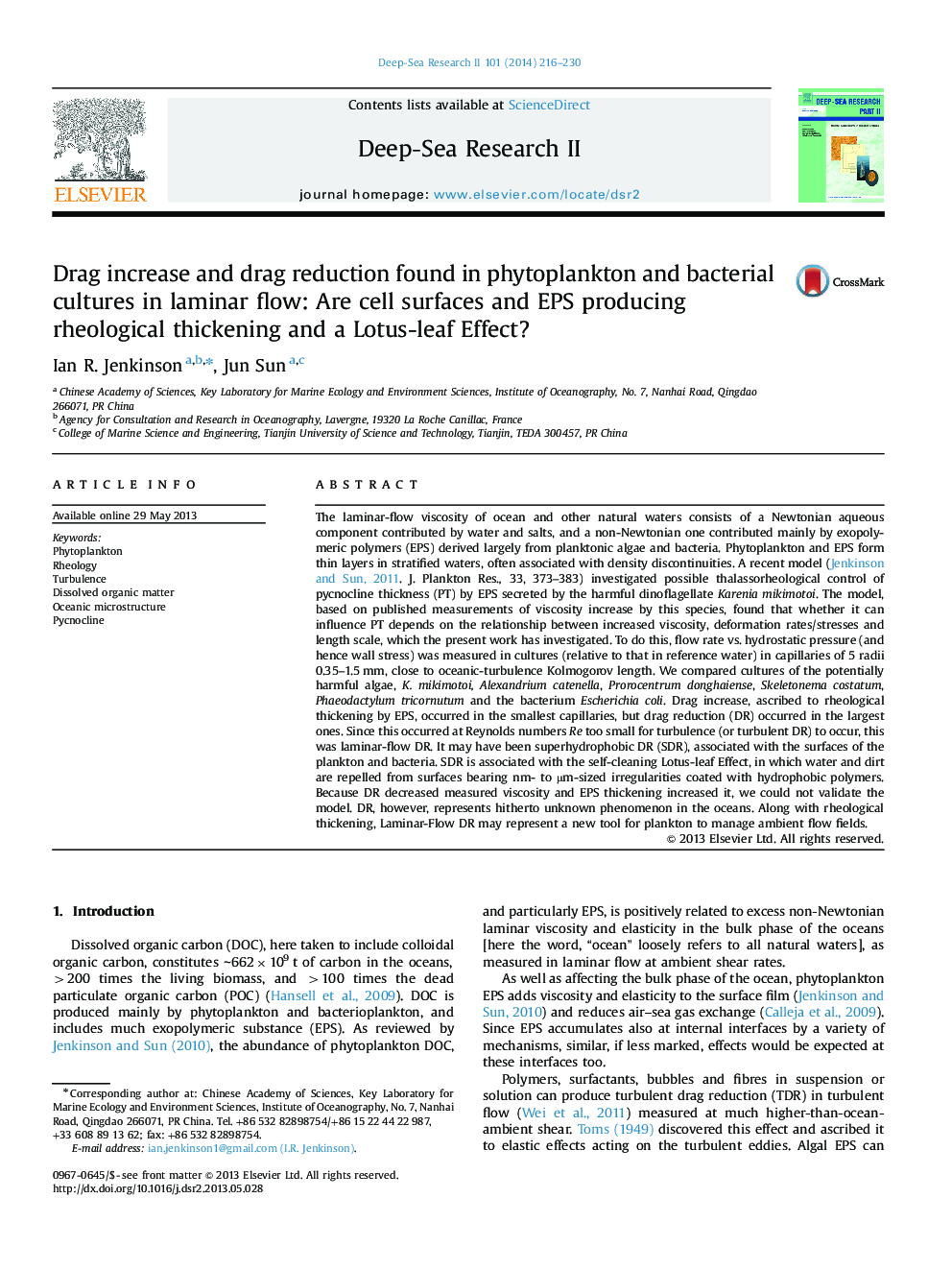| کد مقاله | کد نشریه | سال انتشار | مقاله انگلیسی | نسخه تمام متن |
|---|---|---|---|---|
| 4536374 | 1626439 | 2014 | 15 صفحه PDF | دانلود رایگان |

The laminar-flow viscosity of ocean and other natural waters consists of a Newtonian aqueous component contributed by water and salts, and a non-Newtonian one contributed mainly by exopolymeric polymers (EPS) derived largely from planktonic algae and bacteria. Phytoplankton and EPS form thin layers in stratified waters, often associated with density discontinuities. A recent model (Jenkinson and Sun, 2011. J. Plankton Res., 33, 373–383) investigated possible thalassorheological control of pycnocline thickness (PT) by EPS secreted by the harmful dinoflagellate Karenia mikimotoi. The model, based on published measurements of viscosity increase by this species, found that whether it can influence PT depends on the relationship between increased viscosity, deformation rates/stresses and length scale, which the present work has investigated. To do this, flow rate vs. hydrostatic pressure (and hence wall stress) was measured in cultures (relative to that in reference water) in capillaries of 5 radii 0.35–1.5 mm, close to oceanic-turbulence Kolmogorov length. We compared cultures of the potentially harmful algae, K. mikimotoi, Alexandrium catenella, Prorocentrum donghaiense, Skeletonema costatum, Phaeodactylum tricornutum and the bacterium Escherichia coli. Drag increase, ascribed to rheological thickening by EPS, occurred in the smallest capillaries, but drag reduction (DR) occurred in the largest ones. Since this occurred at Reynolds numbers Re too small for turbulence (or turbulent DR) to occur, this was laminar-flow DR. It may have been superhydrophobic DR (SDR), associated with the surfaces of the plankton and bacteria. SDR is associated with the self-cleaning Lotus-leaf Effect, in which water and dirt are repelled from surfaces bearing nm- to µm-sized irregularities coated with hydrophobic polymers. Because DR decreased measured viscosity and EPS thickening increased it, we could not validate the model. DR, however, represents hitherto unknown phenomenon in the oceans. Along with rheological thickening, Laminar-Flow DR may represent a new tool for plankton to manage ambient flow fields.
Journal: Deep Sea Research Part II: Topical Studies in Oceanography - Volume 101, March 2014, Pages 216–230